Focus is the section of Frieze London where galleries arguably take more risks. It is dedicated to emerging galleries and young artists, but rediscovered artists from earlier generations can also be found on the section’s 36 stands. We take a look at this year’s highlights.
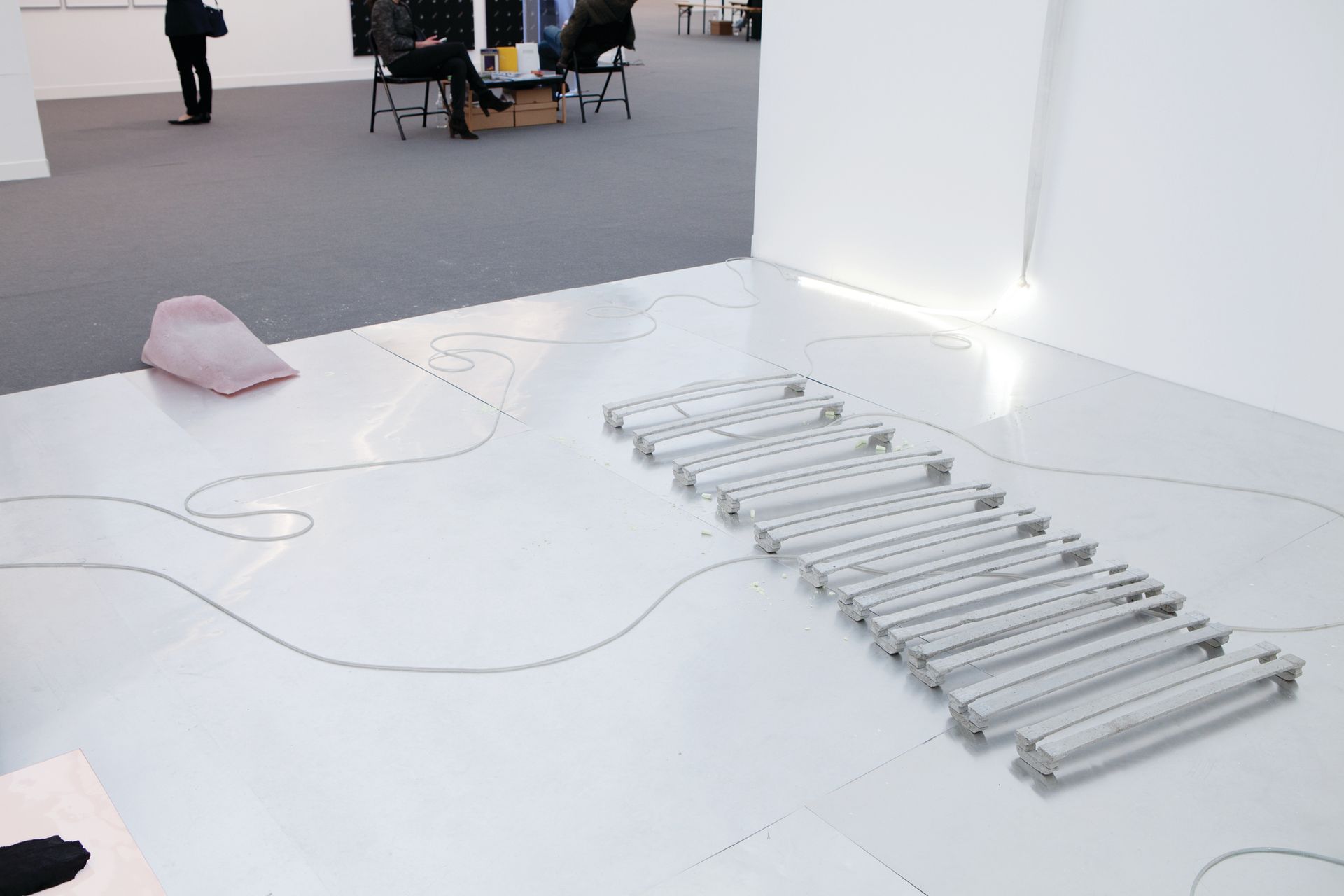
Adriano Amaral, Untitled (2015)
Múrias Centeno (H19)
In this tactile arrangement of found and sculpted elements, the young Brazilian artist Adriano Amaral transforms everyday items through different processes. A shirt sleeve, cast in coal, sits on light-sensitive film, which is pink by day and grows bluer as the natural light fades; concrete blocks have been cast in a fleshy-pink silicone and filled with water. Set on an aluminium floor, the disparate elements are composed like a painting in space.
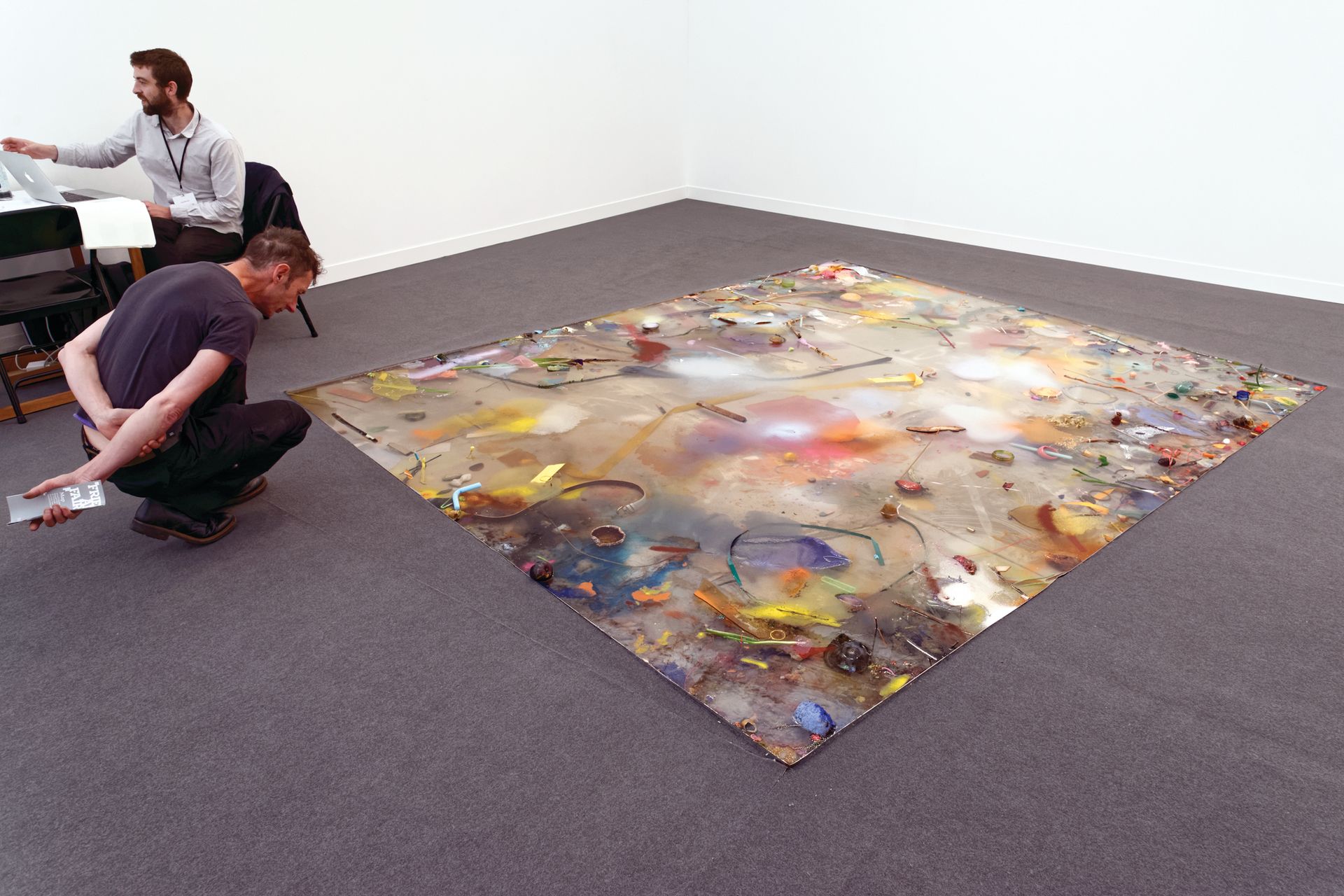
Samara Scott, Lonely Planet II (2015)
The Sunday Painter (H31)
Samara Scott’s pool of colourful detritus is a poetic reflection on consumption and waste. Carefully bobbing or sinking in a shallow tray are found objects such as beauty and clothing accessories, as well as organic materials including flowers, fruit and bread. Scott likens her work to a petri dish supporting a living organism. Up close, it has a gross-out excessive quality, yet her spray-painted accents of colour give the work a decorative abstract beauty when it is seen from afar.
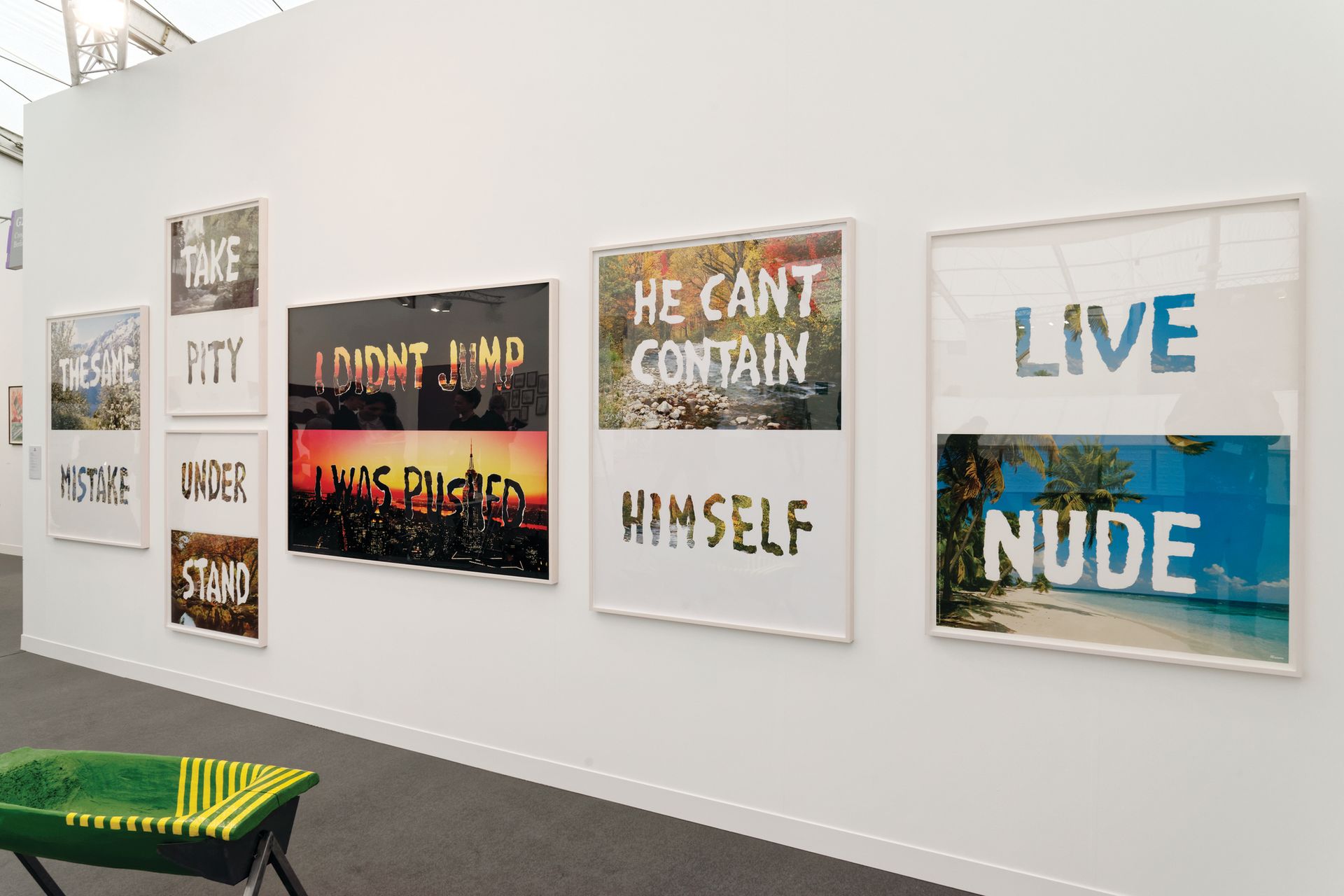
Mitchell Syrop, Torn series (1980s-90s)
Croy Nielsen (G26)
An example of how works made a generation ago can gain new currency, Syrop’s Torn series fits in with recent text-based works by artists such as Eddie Peake. Taking mass-produced, gaudily idyllic posters—mountain ranges, autumn landscapes, New York sunsets—Syrop tore from them familiar phrases and suggestive or allusive combinations of words. The works’ power lies in the double-take prompted by the two halves of the collage and the disjuncture between image and text.
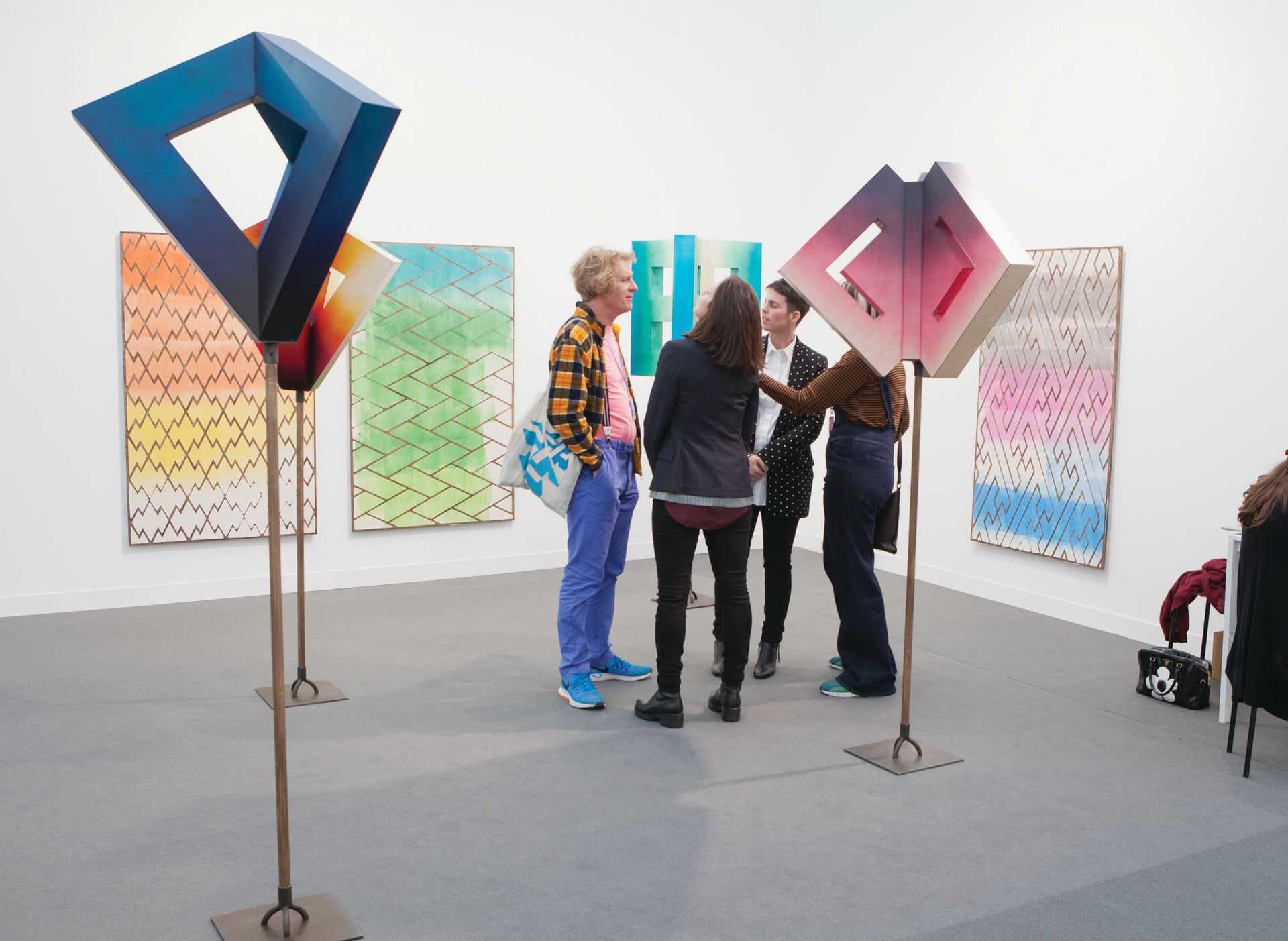
Ruairiadh O’Connell, various works (2015)
Jessica Silverman Gallery (H26)
The Scottish artist Ruairiadh O’Connell’s sculptures and paintings may look as though they were inspired by Modern art, but they are actually informed by Japanese firefighters from the Edo period (1603-1868). The paintings result from a complex layering and printing process using jesmonite, and evoke the elaborate stitching patterns used in the firemen’s uniforms. The sculptures are inspired by matoi—white symbols that the firefighters carried as warnings—but O’Connell paints them in colours inspired by the finishes on electric guitars.
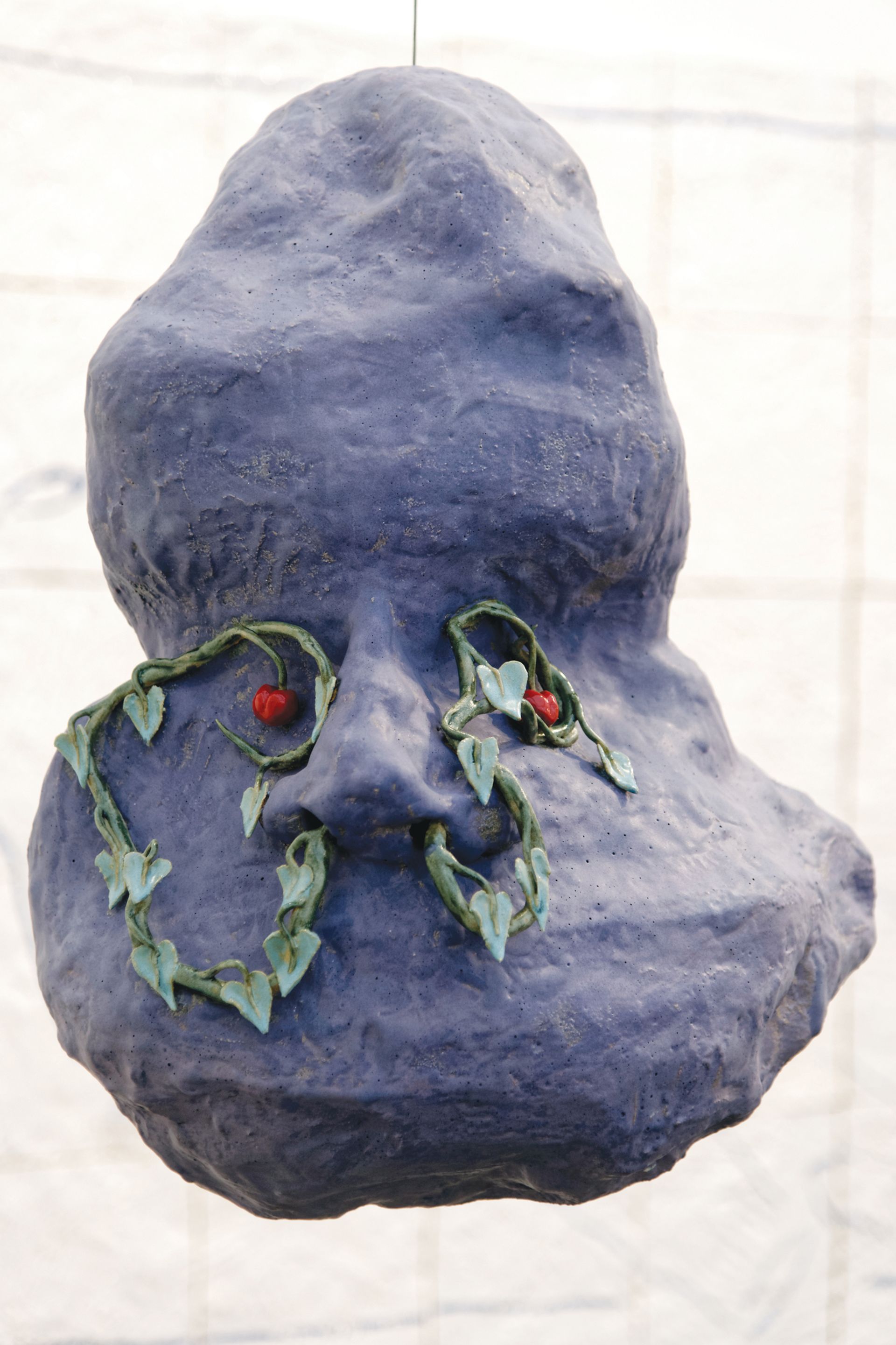
Jesse Wine, Mr Good Ideas (2015)
Limoncello (H24)
Jesse Wine’s often absurdist ceramics are powerfully sculptural and fascinating in the round. The three heads dangling over Limoncello’s booth, all titled Mr Good Ideas, show Wine at his best: where the process of turning raw clay into a recognisable object is palpable, and the glazing is playfully painterly. One head features ivy—partly inspired by Dürer’s drawings—creeping from the nose, with berries forming the eyes.
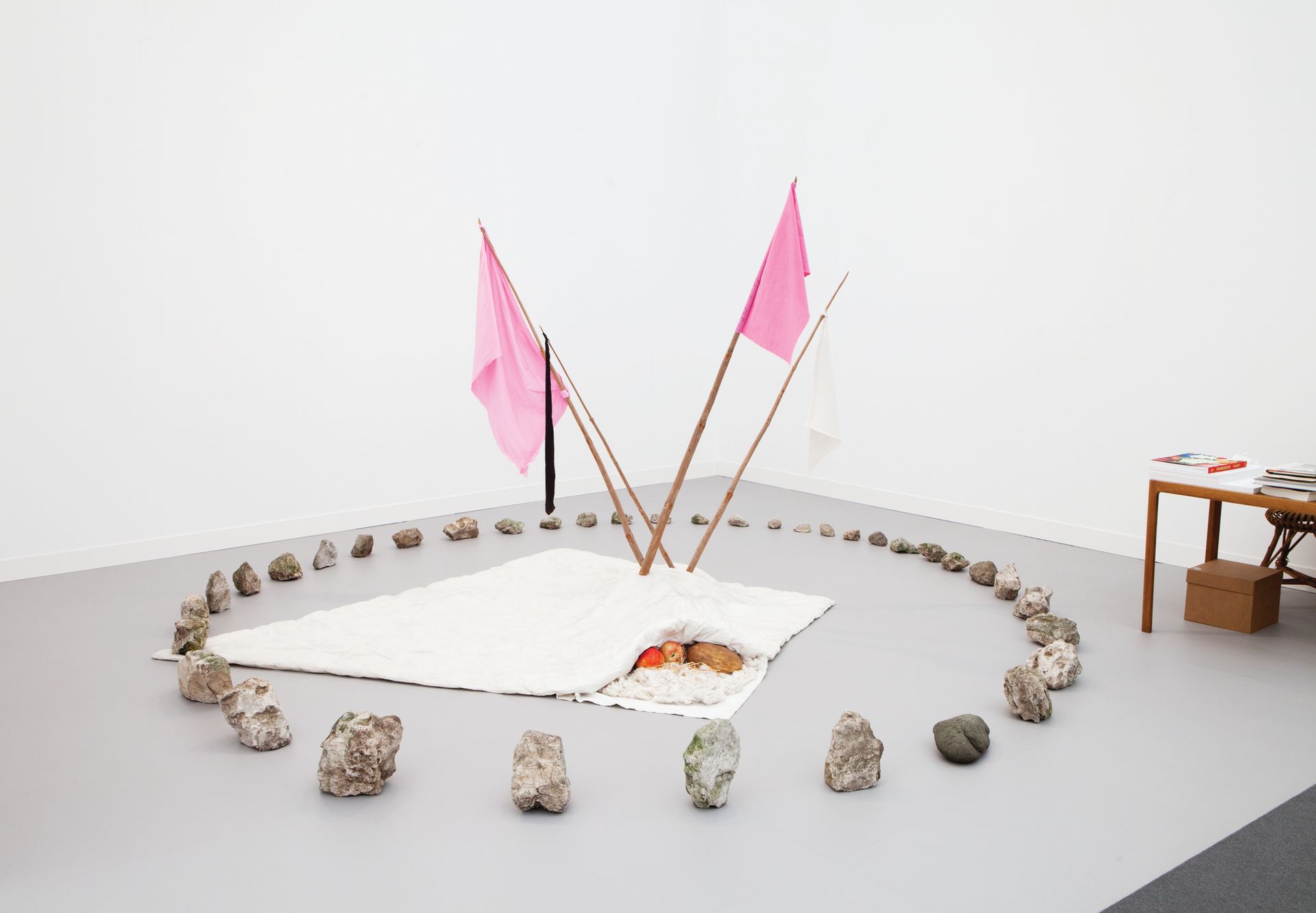
Maria Pinińska-Bereś, Circle (Krag) (1976)
Dawid Radziszewski (H35)
This installation by the late Polish sculptor and performance artist Maria Pinińska-Bereś reflects a recurring concern in her work: the annexing of space. Within a stone circle are papier-maché bread and apples, a quilt and four upright flags, suggesting colonisation. The flags’ colours illustrate the artist’s political convictions: pink as a symbol of womanhood, and black and white as a response to the suppression of workers’ protests in 1970s Poland.

